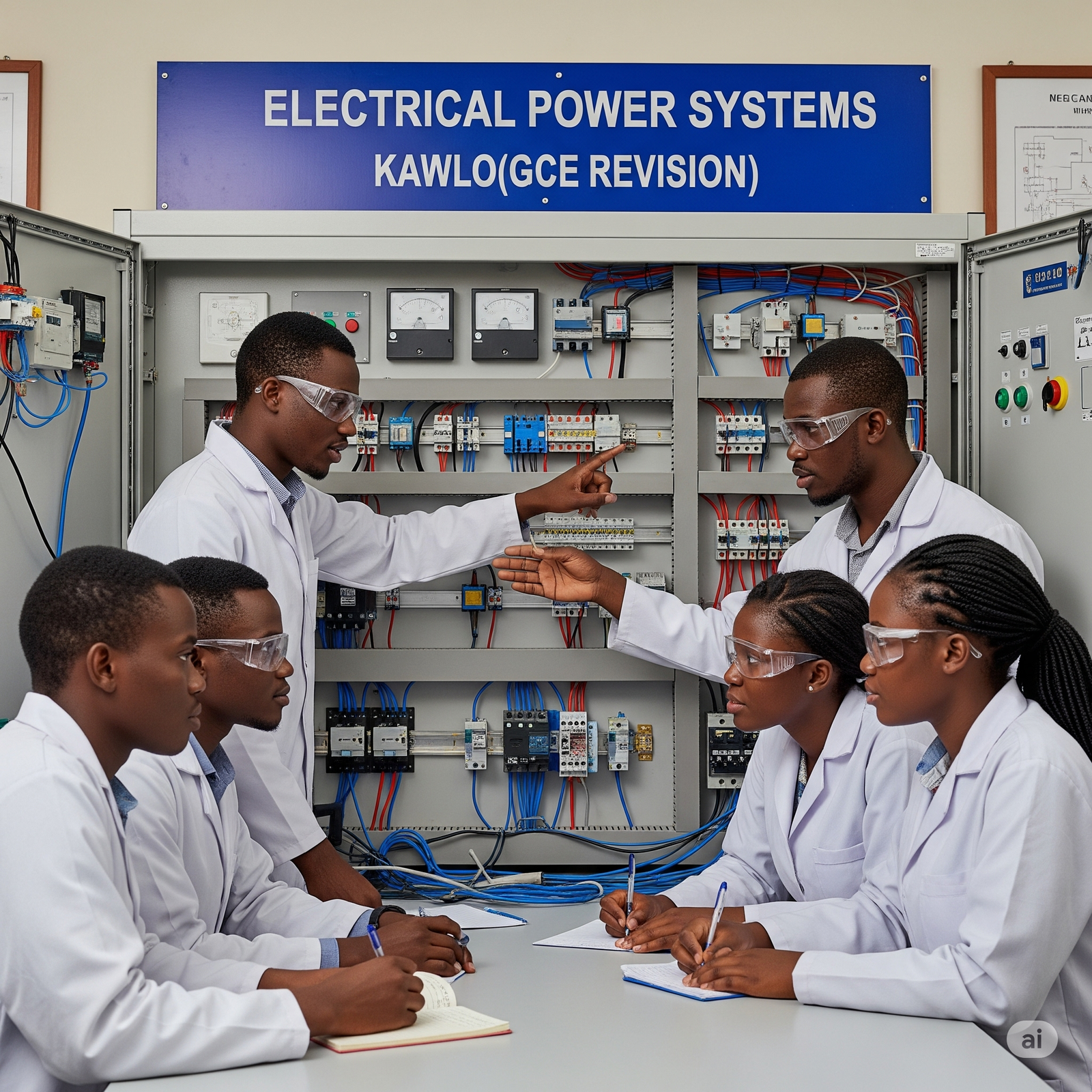cameroon gce june 2002 chemistry Paper 2
To DOWNLOAD CAMEROON GCE JUNE 2002 ChEMISTRY Paper 2 click on the link below

JUNE 2002
SECTION A
1.
When dilute hydrochloric acid is added marble (a polymorph of a certain chemical) chips
(a) What is observed? …. (1 mark)
(b)
(i) Marble is a polymorph of what chemical?
(ii) Give two other polymorphs of the chemical
(c) What is observed when carbon dioxide is bubbled into lime water for?
(i) A few minutes…………………… give the equation ………
(ii) a long time…… give the equation (4marks)
(d) Explain what would happen if dilute sulphuric acid were used in place of hydrochloric acid (2marks)
2. (a)what natural process converts atmospheric nitrogen into nitrogen compound?
(b)Name a plant that harbours bacteria that are
capable of absorbing and converting atmospheric nitrogen into nitrogen compounds (1 mark)
(c)What class of soluble nitrogen compound found in the soil is absorbed by plants
(d) What class of nitrogen compounds is found in all
plants and all animals? (1 mark)
(e)How do animals get the nitrogen found in their
body tissues (l mark)
(f)State one way by which soluble nitrogen compound
in the soil are converted back to atmospheric nitrogen? (l mark)
(g)(i) Explain why it is necessary to add nitrogenous fertilizers to soil that has been farmed for a long time…
(ii)
Name one nitrogen-containing fertilizer? ( 3marks)
(h) What metal is most commonly found in fertilizer? (2 marks)
3. a) Alkenes are the main starting material for addition polymerization.
b) complete the table below
Name f f alkene
|
Ethene
|
Propene
|
Molecular
formula
|
c2H4.
|
|
Structure formula of alkene
|
|
|
Name of polymer made from a alkene
|
|
Polypropene
|
Structure formula of polymer
|
|
|

|
b) What is addition polymerization? (2marks)

(c)
What does n mean?… (I mark)
d) What common feature is found in all alkalines? (1 mark)
e) Use a simple chemical test to distinguish between ethane and ethane and ethene… (2 marks)
4.
in order to find the proportion by volume of one of the main constituents of air a sample of air was passed through three wash bottles, the first containing water, the second containing aqueous sodium hydroxide and the third containing concentrated sulphuric add, and was then collected in a gas syringe.
a) Suggest a reason for passing the air through
i) Water…
ii) aqueous sodium hydroxide
iii) Concentrated sulphuric acid
b) The volume of gas collected in the syringe was 40cm3.This was passed several times over strongly heated copper powder until no further contraction of volume took place. After cooling to the original temperature the volume was found to be reduced to 3.16 cm3
(a) What will be the observed change in copper?.
(ii) Which gas was removed by the copper?
(iii) Calculate the volume of this gas that was present
in the sample of air
(iv) Calculate the percentage of this gas present in the
sample of air (4marks)
(c)i) What is the main gas remaining in the syringe?
ii) There will be small amounts of other gases remaining in the syringe.
Name one of these gases
(D) HQW would you treat the solid remaining to obtain
copper for reuse ? (l mark)
5. The process of obtaining from the mineral sphalerite is outlined below.

a) Apart from zinc, name another element that is
present in sphalerite (1 mark)
b) Which element from the air reacts with the heated
sphalerite? (1 mark)
c) Explain why the sulphur dioxide formed should not be allowed to escape into the air for economic and environmental reasons.
i) Economic reasons:
ii) environmental reasons (3mark)
d) In this process zinc is produced by the electrolysis
of zinc sulphate solution. State the electrode at which zinc is deposited (l mark)
e) Why is the formation of zinc at the electrode called
a reduction? ….(l mark)
f) Zinc can also be obtained from zinc sulphate solution by displacement with another metal M. M+ ZnSO4-> MSO4+Zn
i) From the electrochemical series, choose one metal
that could be used as metal M
ii) Why could the following metals not be used for
this displacement reaction? Sodium
copper . (3marks)
6. From the following salts:
A: Ammonium nitrate B: Calcium carbonate C: Copper (II) chloride D: Sodium carbonate E: Zinc sulphate Select:
a) The salt whose aqueous solution can be used to
neutralize acid soils (2marks)
b) The salt which on heating with sodium hydroxide solution, gives off a gas that turns, red litmus blue
Write the equation for the production of the gas (2marks)
c) The salt which in solution reacts with dilute hydrochloric acid and barium chloride solution to give a white precipitate..
Identify the precipitate. (2marks)
d) The salt which in solution reacts with aqueous
sodium hydroxide to give a blue precipitate Identify the precipitate (2marks)
SECTION B
Answer any TWO questions in this section. All questions carry equal marks. Where appropriate, equations and diagrams should be given to clarify your answers. Write \/our answers on the lined s, which follows this section.
7. Describe a method which will help you obtain
a) W: ter from a mixture of water and kerosene.
b) Sodium chloride from a sample of sea water.
c) Alcohol from a mixture of alcohol and water.
d) Iron filings from a mixture of sulphur and iron
filings mixture (25marks)
8. The rate of production of hydrogen by the reaction of magnesium with 0.5M hydrochloric acidwas investigated. The following tests were obtained with a laboratory
temperature of 15 °C and 1 atmospheric pressure using 0.072g. of magnesium ribbon. The hydrogen gas was collected over water on a gas jar inside a. trough.
Time in minutes
|
0
|
0.5
|
1
|
1.5
|
2
|
2.5
|
3
|
35
|
4
|
4.5
|
5
|
5.5
|
Total Volume of H2 in cm3 at 15°C and lata.
|
0
|
9.5
|
18
|
26.5
|
33.5
|
41.4
|
48
|
54
|
59
|
62
|
63
|
63
|
a) (i) Plot a graph of volume of hydrogen (Vertical axis) against time (horizontal axis)
(ii) On the same graph, sketch and label the curve you would have expected if the experiment had been carried out at a higher temperature.
(iii) What is the total volume of hydrogen obtained from G.072g. of magnesium at 15°c according to this experiment?
(iv) Calculate the volume that would have been obtained at this temperature from 1 mole of magnesium.
(v) How does your answer compare with the 24000cm3 normally accepted for the molar volume of a gas?
Suggest one possible reason for the difference in volume.
b) On carrying out a similar experiment with calcium carbonate 168Q0cm3of carbon dioxide was collected.
(i) Suggest why the volume of carbon dioxide is so low.
(ii) State and explain two ways in which the rate of
reaction of calcium carbonate with dilute hydrochloric acid could be increased other than by heating (25marks)
9. Describe the extraction of aluminium from a named ore. Give three large scale uses of aluminium and relate each use with a property of aluminium.(25 marks)
10. Crystal lattices include giant ionic, giant metallic, giant molecular, and giant atomic.
a) With a suitable example describe the formation of each of the lattices, specifying the type of particles that make up the lattice, and the forces holding the particles together in the lattice
b) For each lattice give a physical property and show
how the property is related to tire structure………….( 25 marks)



















